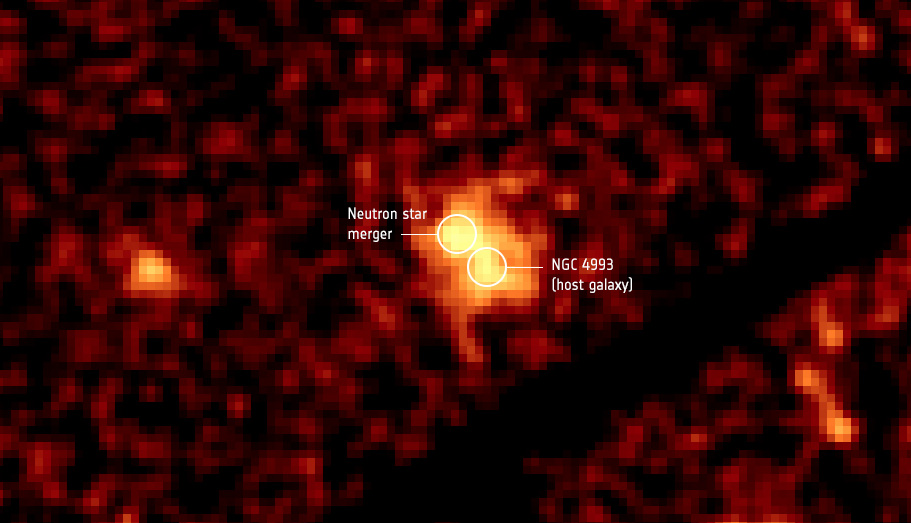
 Credit: ESA/XMM-Newton; P. D'Avanzo (INAF–Osservatorio Astronomico di Brera)
Credit: ESA/XMM-Newton; P. D'Avanzo (INAF–Osservatorio Astronomico di Brera)
A Baby Black Hole?
August 17, 2017 was an historic date. For the first time, on that date, a transient source in the cosmos was detected by both its emitted electromagnetic radiation and by the gravitational waves it generated. This gravitational wave source, dubbed GW170817, was identified with a burst of gamma ray emission, and as a variable source of optical, ultraviolet and X-ray emission. These observations helped pinpoint the source as a kilonova, a merger of two neutron stars in a faraway galaxy. Attempts to measure the X-ray emission from this source by the Chandra X-ray observatory were initially disappointing. Observations on August 19, two days after the gravitational wave event, failed to detect the source in the Chandra X-ray band. But Chandra did not give up, and was eventually rewarded with the first detection of X-ray emission on August 26, 2017. The CXO has continued to monitor the source, and more recent observations showed that the source brightened significantly by December. Observations with the XMM-Newton X-ray satellite were made in December, as soon as the source became visible to XMM. Comparing these observations to the Chandra ones showed that the brightness of the source had apparently levelled off. The image above shows this initial XMM-Newton observation; the emission from the kilonova is marked by the upper left circle, while emission from the host galaxy is also detected by XMM. The brightness of the X-ray emission suggests that this merger has resulted in the birth of a new black hole, with a mass of about 3 times the mass of the Sun. If this is confirmed, this baby black hole would be the lowest mass black hole known.
Published: June 4, 2018
<
HEA Dictionary ● Archive
● Search HEAPOW
● Other Languages
● HEAPOW on Facebook
● Download all Images
● Education ● HEAD
>

Each week the HEASARC
brings you new, exciting and beautiful images from X-ray and Gamma ray
astronomy. Check back each week and be sure to check out the HEAPOW archive!
Page Author: Dr. Michael F. Corcoran
Last modified Tuesday, 27-Feb-2024 10:15:18 EST


